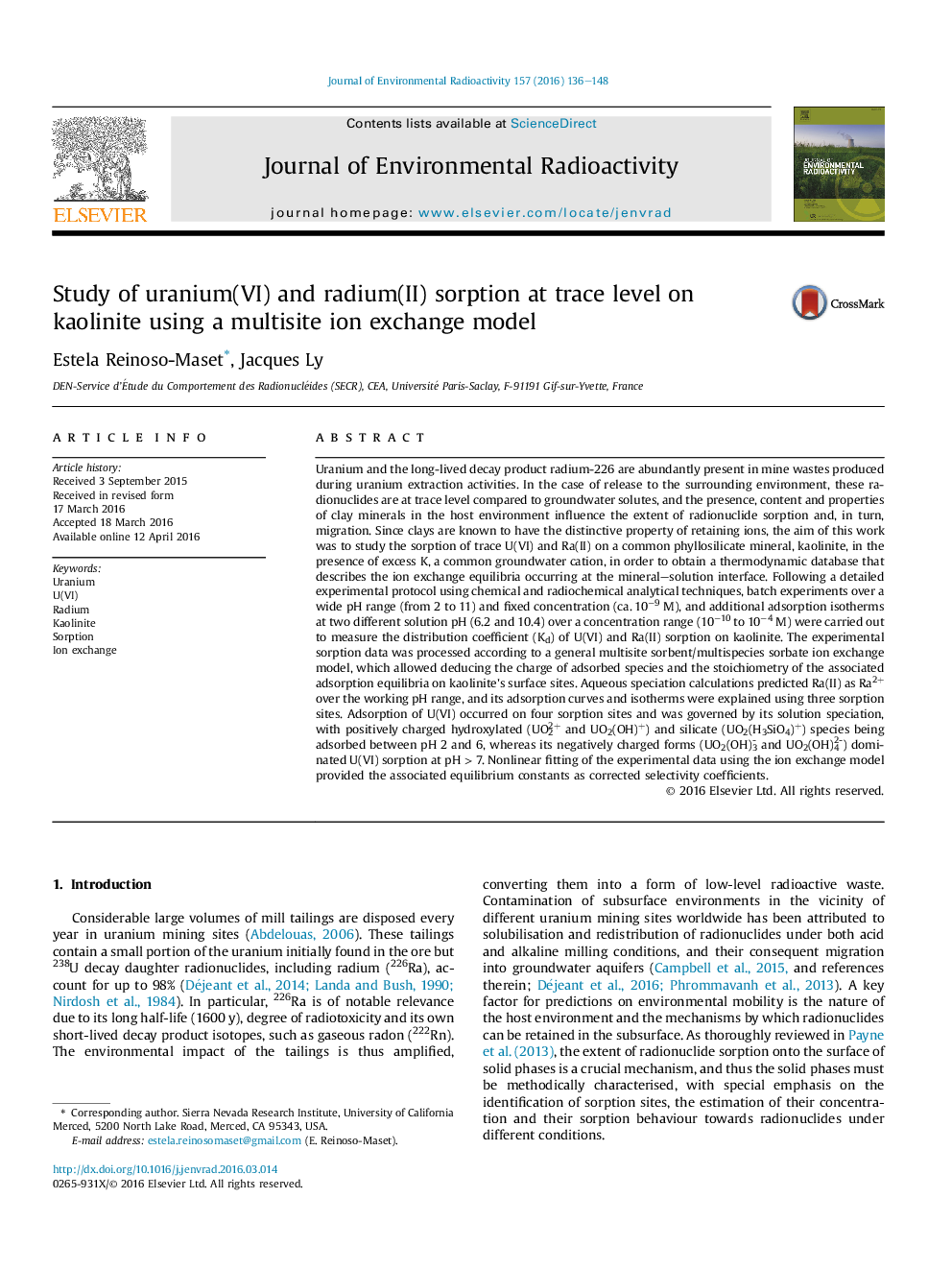| Article ID | Journal | Published Year | Pages | File Type |
|---|---|---|---|---|
| 8081917 | Journal of Environmental Radioactivity | 2016 | 13 Pages |
Abstract
Uranium and the long-lived decay product radium-226 are abundantly present in mine wastes produced during uranium extraction activities. In the case of release to the surrounding environment, these radionuclides are at trace level compared to groundwater solutes, and the presence, content and properties of clay minerals in the host environment influence the extent of radionuclide sorption and, in turn, migration. Since clays are known to have the distinctive property of retaining ions, the aim of this work was to study the sorption of trace U(VI) and Ra(II) on a common phyllosilicate mineral, kaolinite, in the presence of excess K, a common groundwater cation, in order to obtain a thermodynamic database that describes the ion exchange equilibria occurring at the mineral-solution interface. Following a detailed experimental protocol using chemical and radiochemical analytical techniques, batch experiments over a wide pH range (from 2 to 11) and fixed concentration (ca. 10â9Â M), and additional adsorption isotherms at two different solution pH (6.2 and 10.4) over a concentration range (10â10 to 10â4Â M) were carried out to measure the distribution coefficient (Kd) of U(VI) and Ra(II) sorption on kaolinite. The experimental sorption data was processed according to a general multisite sorbent/multispecies sorbate ion exchange model, which allowed deducing the charge of adsorbed species and the stoichiometry of the associated adsorption equilibria on kaolinite's surface sites. Aqueous speciation calculations predicted Ra(II) as Ra2+ over the working pH range, and its adsorption curves and isotherms were explained using three sorption sites. Adsorption of U(VI) occurred on four sorption sites and was governed by its solution speciation, with positively charged hydroxylated (UO22+ and UO2(OH)+) and silicate (UO2(H3SiO4)+) species being adsorbed between pH 2 and 6, whereas its negatively charged forms (UO2(OH)3- and UO2(OH)42-) dominated U(VI) sorption at pHÂ >Â 7. Nonlinear fitting of the experimental data using the ion exchange model provided the associated equilibrium constants as corrected selectivity coefficients.
Related Topics
Physical Sciences and Engineering
Energy
Nuclear Energy and Engineering
Authors
Estela Reinoso-Maset, Jacques Ly,
